Nothing goes better with daikon (leftover from my friend's hot pot party) than beef brisket in my mind so I brought home a pack. I have previously made it with "chu hou" sauce (柱侯醬), tomato sauce, curry, etc. So I thought I would try it with "sa cha" sauce (沙茶醬) this time.
I heard one of my aunties mentioned before I could use the rice cooker to make tender beef brisket so this is what I attempted. The result is quite satisfactory. I invited my friends to be my "lab rats" and when I got their approving nods, I brought some to let my auntie and uncle to try. Too bad I was rushed when I was making the second batch, the daikon was not 100% ready and the beef was too tender at this point :'( oh well... my auntie and uncle said it was tasty nonetheless... lol...
Ingredients (serves 8):
2 lbs of frozen beef brisket
2 daikons
1 medium purple onions (or 6 shallots)
A:
2 star anise
2 pinches of Sichuan peppers
1 large slice of ginger
6 cloves of garlic
1 leek (or a bunch on scallions)
3 cups of Chinese cooking wine (黃酒)
1 cup of soy sauce (生抽)
B:
2 tbsp butter
4 tbsp sa cha sauce
2-3 small pieces of rock sugar
2 tbsp soy sauce
Directions:
1. Cover the beef brisket (no need to thaw) with cold water in a large pot. Boil over the lowest heat (I used the warm function on my induction cooker). As the beef thaw, the water will turn red (takes about 20-30 minutes). Pull the beef apart as it thaws and change the water to let more of the blood come out.
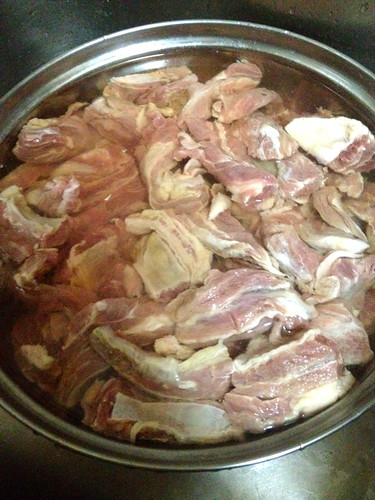 |
| The beef brisket was cut into long strips when they were bought I further cut them into large chunks after the meat is thawed and ready |
Note: the water will not be hot and the meat will not be cook. The whole point is to get rid of the blood in the beef for better taste and flavor in the cooking process to come.
2. Rinse the beef and place it in the rice cooker (or slow cooker). Add water (just over the beef) and ingredients (A). Cook for 60 minutes. Turn off the cooker and let the residual heat do the work to continue to cook and tenderize the meat. Leave it overnight.
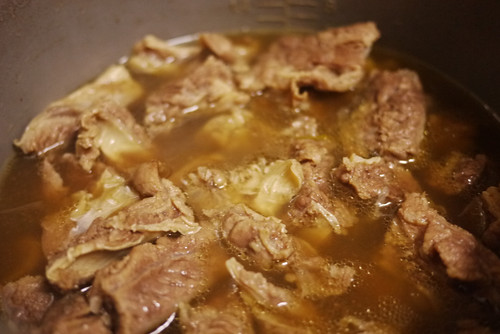 |
| how it looks like after 75 minutes of cooking my mom said 60 minutes is more than enough |
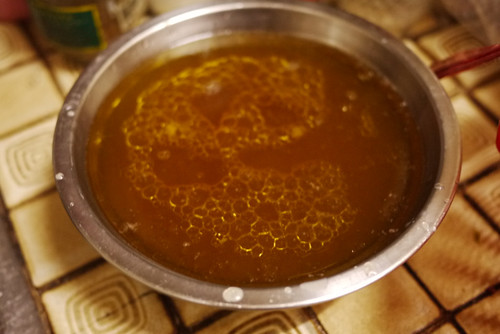 |
| I tried to get rid of as much butter as possible could have left it in the rice cooker overnight and just let it cool there |
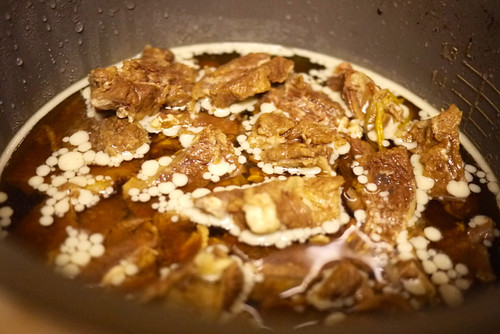 |
| This is the morning after. The white stuff floating are all butter! (and I thought I got most of it the night before...) |
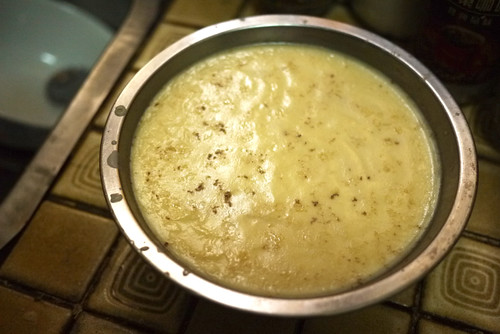 |
| this is what happened to the bowl last night |
 |
| I rimmed a knife around the edges and cut it for easy removal. Like I said, could have left the entire pot in the cooker and remove it in the morning too. It would have been easier. |
4. In a pot, heat a tbsp of butter, add the sliced shallots, and add 2 tbsp sa cha sauce. Add the beef when you can smell the aroma of the spices. Stir for an even coating of the sauce onto the beef.
5. In a separate pot, add 1-2 ladles of the beef juice, add some chicken stock (1-2 ladles). Bring to a boil. Add the quartered daikon. Bring to a boil. Turn off the heat and cover the daikon until it becomes transparent.

6. Add the daikon to #4. Serve over rice or with bread.
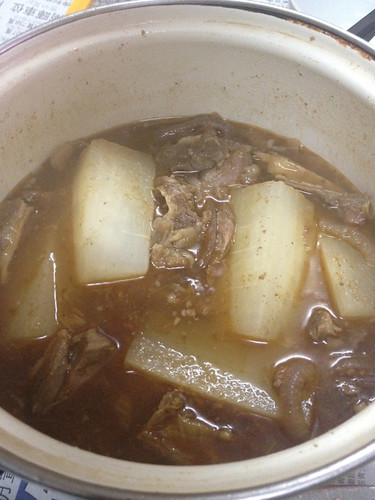
(twist) Add the juice from #5 and make it into a hot pot. This pot will go well with udon, yuba roll, bamboo sticks, veggies, shirataki (魔芋絲), etc.
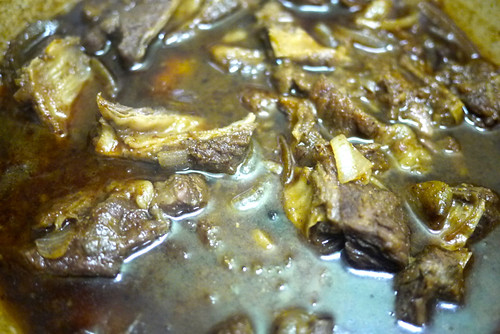
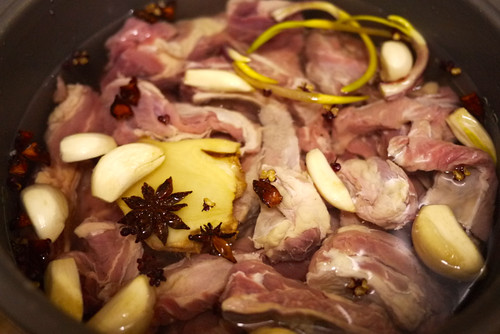
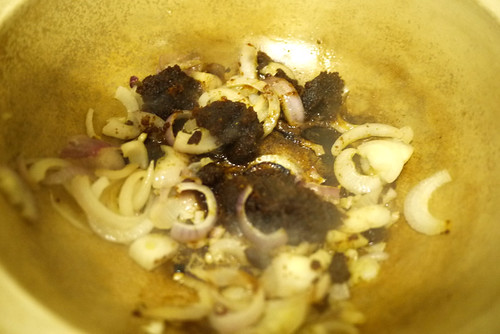
This recipe made my day. Going to cook that tomorrow, now I must finish my work. My boss watching :)
ReplyDeleteglad to know! hope yours turn out well :)
Delete